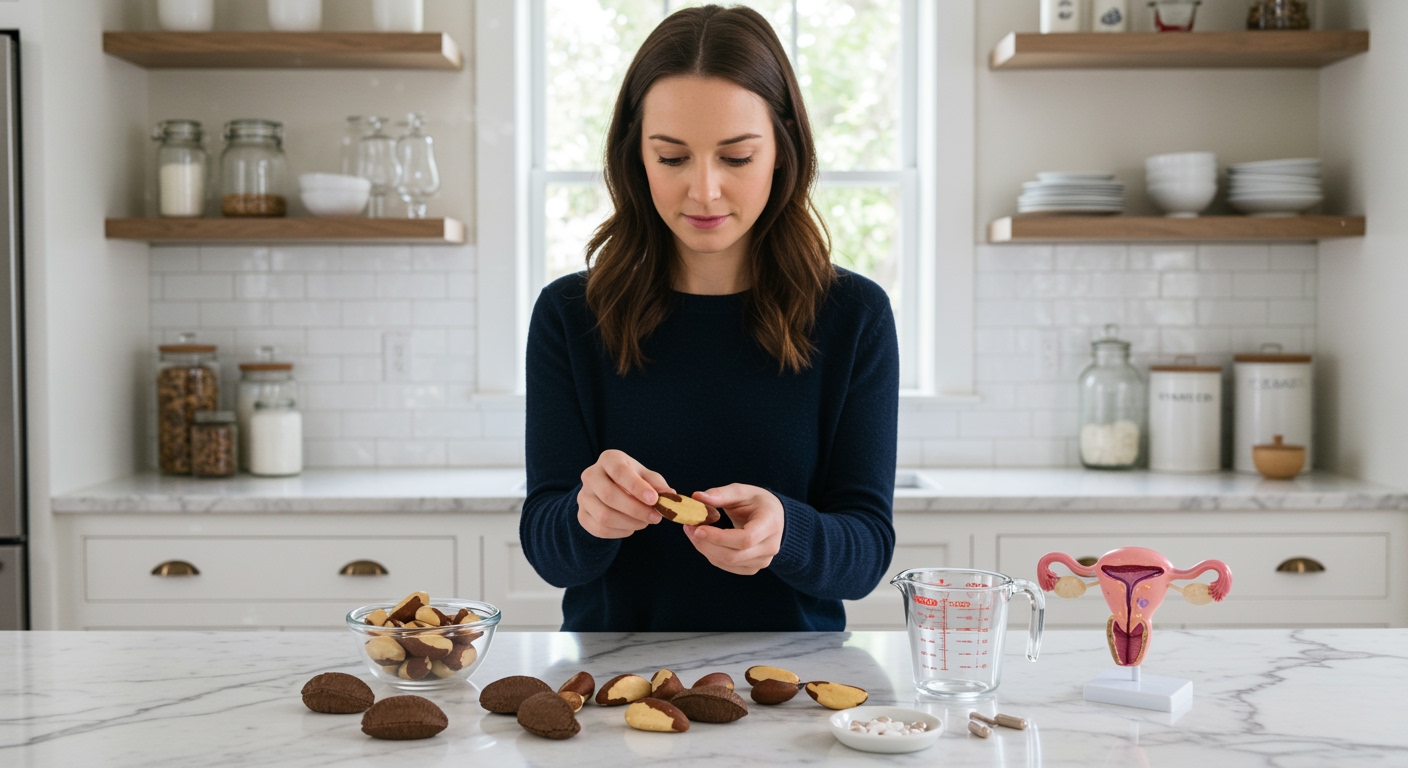✪ Key Takeaway: Chaste tree may help some PCOS fertility issues by balancing hormones, but evidence remains limited and individual results vary.
Introduction
Millions of women with PCOS struggle to conceive, desperately searching for natural solutions that might restore their fertility dreams.
You might be wondering if chaste tree could be the missing piece in your fertility puzzle, especially after hearing success stories from other women or reading promising claims online.
Hi, I am Abdur, your nutrition coach, and today I am going to explain whether chaste tree actually helps PCOS fertility problems based on current scientific evidence.
What Exactly Is Chaste Tree And How Does It Work?
Chaste tree, scientifically known as Vitex agnus-castus, is a Mediterranean shrub that has been used for centuries to treat women’s reproductive issues.
The herb works by influencing your pituitary gland, which controls hormone production in your body.
Specifically, chaste tree appears to increase luteinizing hormone (LH) and decrease prolactin levels, which can help balance your reproductive hormones.
This hormonal shift may support ovulation and improve menstrual cycle regularity, two key factors in fertility.
The active compounds in chaste tree, called diterpenes, bind to dopamine receptors in your brain and trigger these hormonal changes.
✪ Fact: Chaste tree gets its name because monks historically used it to suppress libido and maintain celibacy.
Does Science Support Chaste Tree For PCOS Fertility?
Research on chaste tree for PCOS fertility shows mixed results, with some promising findings but significant limitations.
A 2021 systematic review found that chaste tree may help improve menstrual irregularities and reduce some PCOS symptoms, but fertility outcomes were not consistently measured.
Small studies suggest that chaste tree might help women with luteal phase defects, a common issue in PCOS that can prevent successful pregnancy.
However, most research involves small sample sizes and short treatment periods, making it difficult to draw definitive conclusions about long-term fertility benefits.
The herb appears most effective for women with mild PCOS symptoms rather than severe cases with significant insulin resistance.
More high-quality, large-scale studies are needed to establish whether chaste tree truly improves conception rates in women with PCOS.
✪ Pro Tip: Track your menstrual cycle and ovulation signs if you decide to try chaste tree to monitor its effects.
What Are The Potential Benefits And Risks?
Chaste tree may offer several potential benefits for women with PCOS beyond fertility improvements.
Some women report more regular menstrual cycles, reduced PMS symptoms, and improved mood while taking the herb.
The herb might also help reduce elevated prolactin levels, which can interfere with ovulation in some PCOS cases.
However, chaste tree can cause side effects including nausea, headaches, digestive issues, and skin reactions in some women.
The herb may interact with hormonal medications, birth control pills, and fertility treatments, potentially reducing their effectiveness.
Women with hormone-sensitive conditions like breast cancer should avoid chaste tree due to its hormonal effects.
Results typically take 3-6 months to appear, requiring patience and consistent use for potential benefits.
✪ Note: Always consult your doctor before combining chaste tree with any fertility medications or treatments.
How Should You Use Chaste Tree For Best Results?
If you decide to try chaste tree, proper dosing and timing are crucial for potential effectiveness.
Most studies use 20-40 mg daily of standardized chaste tree extract, typically taken in the morning on an empty stomach.
The herb works best when taken consistently every day, preferably at the same time each morning.
You should expect to use chaste tree for at least 3-6 months before evaluating its effectiveness for your fertility goals.
Quality matters significantly, so choose standardized extracts from reputable manufacturers with third-party testing.
Stop taking chaste tree immediately if you become pregnant, as its safety during pregnancy has not been established.
Combine chaste tree with other PCOS management strategies like proper nutrition, regular exercise, and stress management for best results.
✪ Pro Tip: Keep a fertility journal to track changes in your cycle, symptoms, and overall well-being while using chaste tree.
The Bottom Line
Chaste tree shows promise for some PCOS fertility issues, but the evidence remains limited and individual responses vary significantly.
Hope is powerful, but realistic expectations paired with comprehensive care create the best foundation for fertility success.
I would love to hear about your experiences with chaste tree or any questions you have about natural approaches to PCOS fertility in the comments below.
References
At NutritionCrown, we use quality and credible sources to ensure our content is accurate and trustworthy. Below are the sources referenced in writing this article:
- PMC: Vitex agnus-castus for Premenstrual Syndrome
- PMC: Herbal Medicine for PCOS
- Facts About Fertility: Herbals for PCOS and Associated Infertility
- Holistic Fertility Institute: Chaste Tree for Fertility





